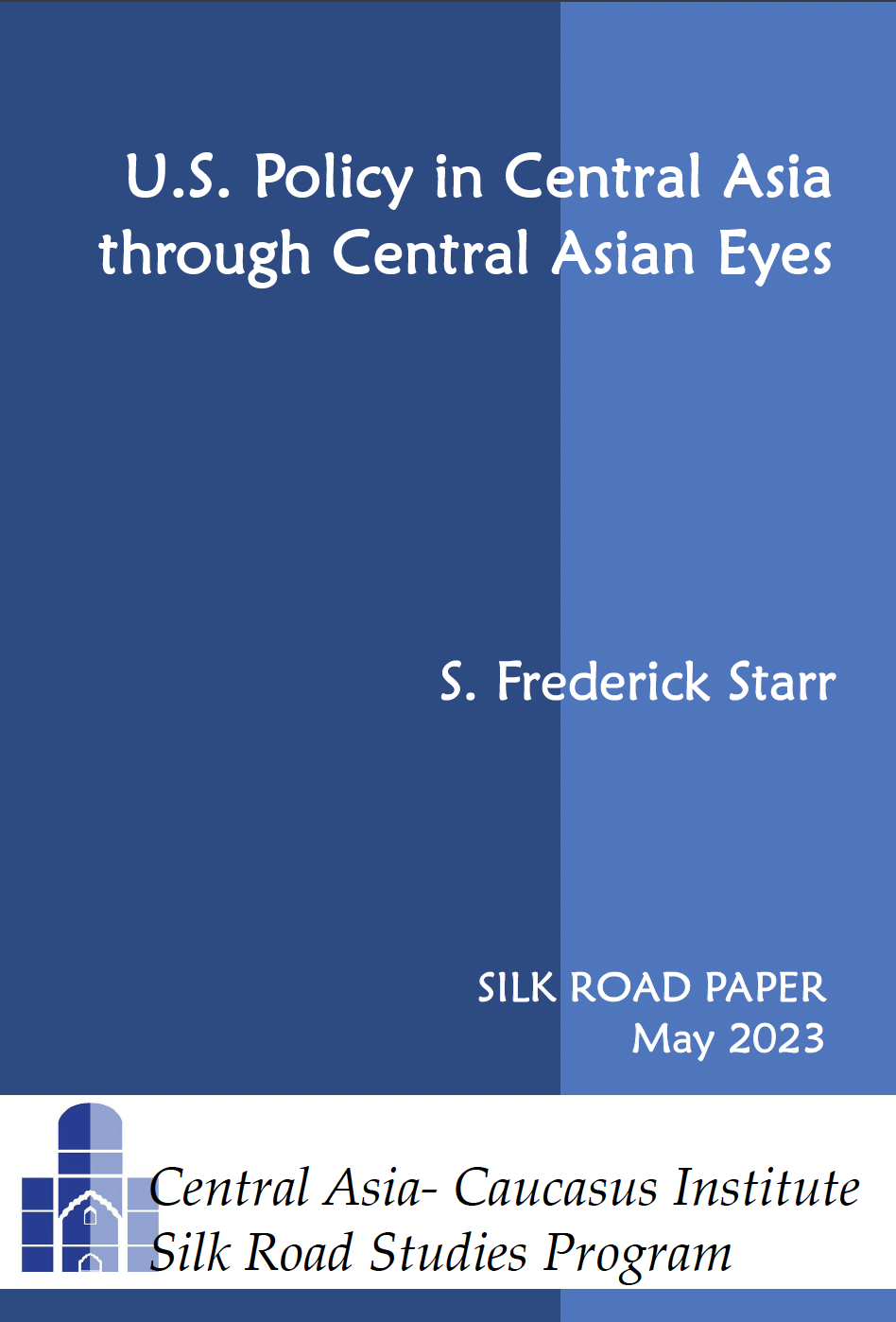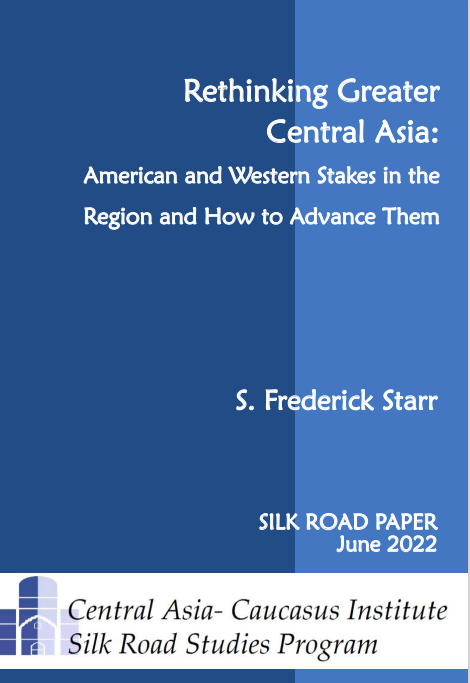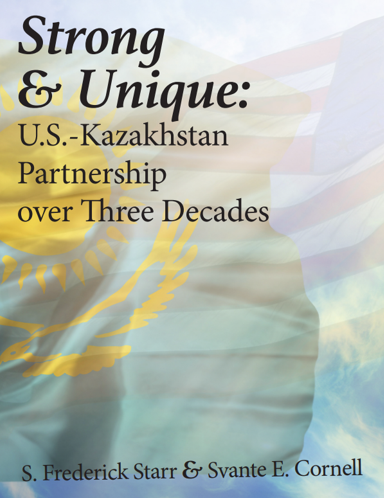IMPLICATIONS: The aforementioned trends indicated that as of 2005, the democracy campaign was becoming counterproductive, that the U.S. had taken Central Asia for granted, that its policymaking processes and institutions were incoherent as regards that region, and that Russia and China, newly invigorated by rising economies, were now confident in their ability to fight back and resist American imperatives. In reply, Washington has lately begun to craft a new policy to meet these changing circumstances. First, its relationship with Uzbekistan is moribund if not dead. Cooperation is unlikely except on urgent issues like removing nuclear materials and reactors from there with Russian cooperation. Instead, Washington will now look to the thriving Kazakhstan as its main partner there. This new stance owes much to the need for diversification of energy. Secretary of Energy Samuel Bodman and Vice-President Cheney both traveled to Kazakhstan to encourage it to join the Baku-Ceyhan pipeline and avoid Russian schemes for total energy domination of Central Asia. But beyond that, Washington will continue aiding Kazakhstan and Azerbaijan militarily, particularly with regard to their navies so that they can independently defend their Caspian Sea energy platforms and interests, without being swallowed up in Moscow’s plans for a Russian-dominated Caspian navy. Second, the State Department has announced its intention to place Nagorno-Karabakh and other frozen conflicts on the agenda for the forthcoming G-8 meetings in July in St. Petersburg. While it is unclear if Russia is contributing to the stalemate in Karabakh, it certainly lies behind the failure to make any progress on the ‘frozen’ conflicts in Moldova and Georgia. Thus Washington will use this occasion to arraign Russia in public if not confront it in private at those meetings on those issues and possibly reinvigorate its diplomatic efforts to move them to resolution, as is currently happening with regard to the Karabakh conflict. Third, the State Department has not only reorganized itself to bring Central and South Asian states into a single bureau led by Assistant Secretary of State Richard Boucher, it also is offering bold new proposals to help integrate Central and South Asian infrastructures through massive electricity projects and other future energy projects. India and Pakistan already are seeking oil and gas from the area and they need electricity too. Success in implementing these large-scale projects will also redound very much to the stability and further prosperity of Afghanistan. In view of the U.S.’ strategic partnership with India, this program also would materially aid India’s continuing military and economic efforts to upgrade its strategic presence in Central Asia. Fourth, the Administration in April welcomed Azerbaijani President Ilham Aliyev to Washington in spite of earlier qualms about human rights and democracy. Again, this signals intensified interest in energy and in neutralizing Iran as well as Russia in the South Caucasus. Although Azerbaijan cannot accept being used as a base in a possible Iran operation, it can continue to give overflight rights for planes going to Manas and Afghanistan, help influence Kazakhstan to join the Baku-Ceyhan pipeline, and devise alternatives to Russian schemes for energy export. Aliyev’s visit to Washington and Cheney’s to Astana may also signify the Administration’s increased awareness that its democracy project ran into the sand and was terribly counterproductive in Central Asia. Certainly it gained nothing for Uzbeks, Kazakhs and others, and only led their governments closer to Moscow. Although a Senatorial move to impose sanctions on Uzbekistan’s leaders is now underway, any successful program to improve governance in Central Asia must engage both the governments and the reform communities in these regions to have any chance of success. Moreover, as geopolitical rivalry with Moscow grows, more classically defined national interests are likely to prevail as the U.S. priority, because if Washington cannot maintain dialogue with these regimes, it cannot gain much access to reformers or leverage the bilateral relationship with their governments in favor of reform.
CONCLUSIONS: All these moves add up to the beginning of a framework for a new and different American policy. But for it to succeed, there must be far greater inter-agency cohesion than was previously the case and much greater awareness of the strategic realities in the region. For example, it is unlikely that Kazakhstan can or will play the role of Washington’s main partner if that endangers its careful balancing act with its two neighbors, Russia and China. More resources must also be devoted to the areas along with placing it on a higher profile so that cabinet members and higher officials continue to travel there, and their opposite numbers visit Washington more frequently. Such a shift is necessary, because these are the areas of priority of Russian (and to a slightly lesser degree Chinese) engagement. As the past few years have clearly shown, Russia and China will not countenance anything like win-win schemes, which are completely contrary to their cognitive universe and experience. While it is not certain that America’s new moves represent a fully reconceived and coherent policy, what is clear is that the geopolitical rivalry in the Caucasus and Central Asia is now moving into high gear and will remain there for a long time to come.
AUTHOR’S BIO: Professor Stephen Blank, Strategic Studies Institute, U.S. Army War College, Carlisle Barracks, PA. The views expressed here do not represent those of the US Army, Defense Dept. or the U.S. Government.






 Book S. Frederick Starr and Svante E. Cornell,
Book S. Frederick Starr and Svante E. Cornell,